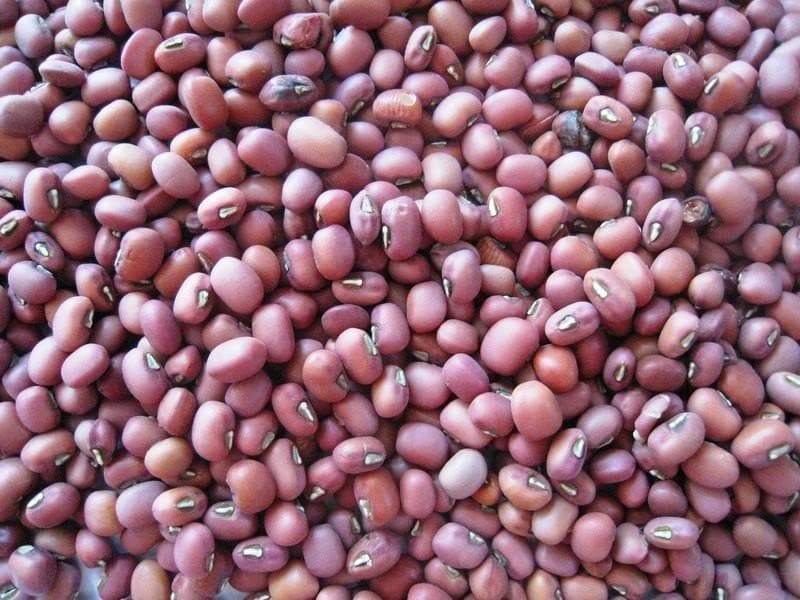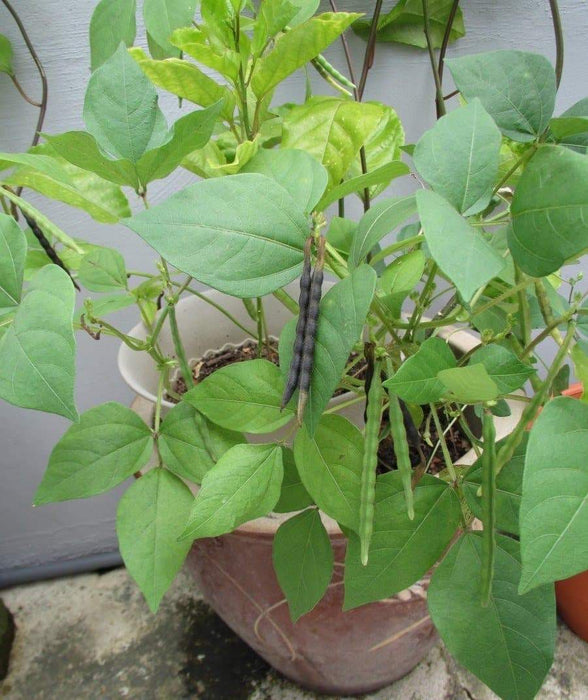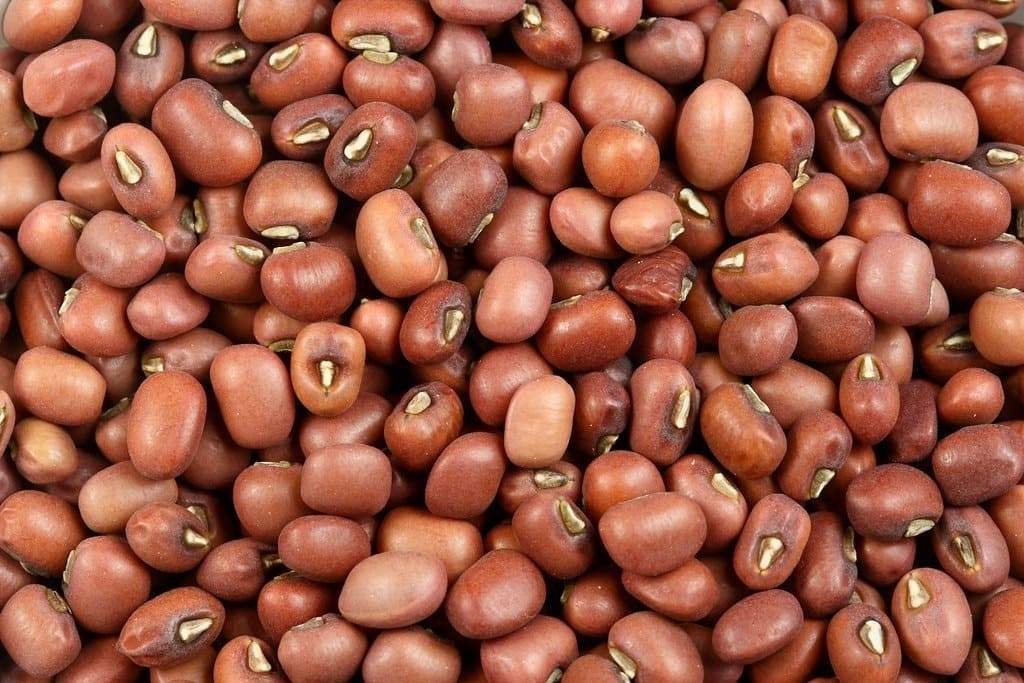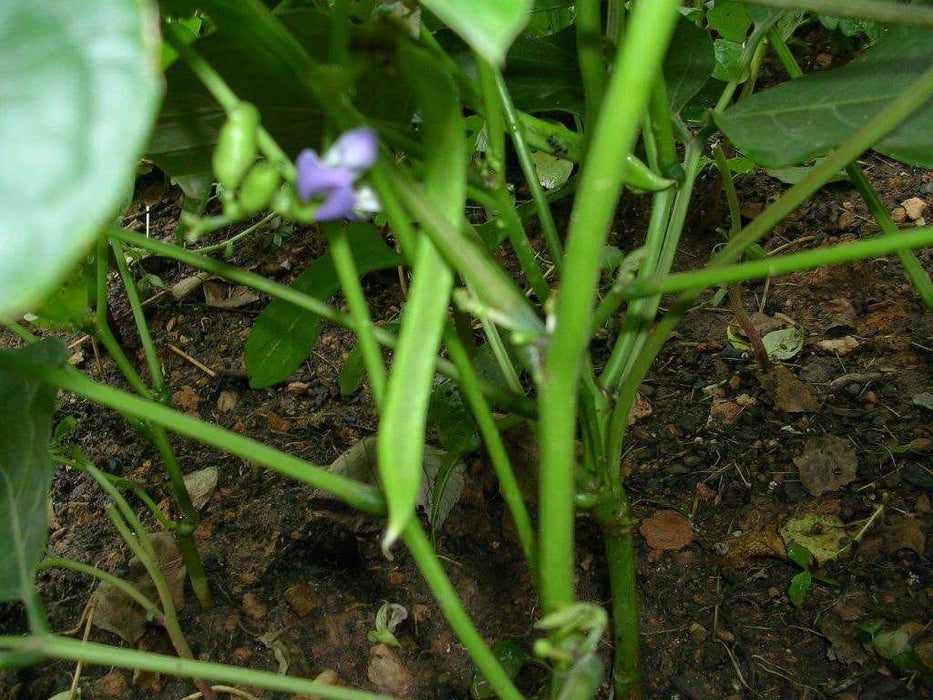
Red MUNG BEAN Plant Seeds, Vigna radiata
Most orders are processed by the next day
Select your desired size and/or color from the available options.
We also carry green mung bean and black mung bean !
Organic. Grow in the garden or enjoyed as dried bean or as a crunchy, nutritious sprout.
Mung beans are among the very easiest beans to grow. Mung beans are small, green legumes often found in Chinese cooking. When sprouted they are more commonly known as bean sprouts. Mung beans can be eaten raw when sprouted, or eaten cooked with the skin on or off. They can grow in virtually any environment and they do well both indoors and outdoors
Many people know mung beans well, although they may not realize that mung beans are the familiar beans that make up bean sprouts (used in Asian recipes and in salads).
Instead of growing mung beans as sprouts, you can also plant them in the garden and grow mung beans in the soil. Plant mung beans when the soil is warm and they will be ready for harvest in just over three months.
Growing Mung Beans
How to Grow and Sprout Mung Beans
The mung bean, scientific name Vigna radiata, is commonly grown as a sprout. As a member of the of the Fabaceae (legume family) it is closely related to plants such as chick pea and broad beans. The sprouts are rich in bioavailable vitamins, minerals, proteins, amino acids, phytochemicals and energy; such nutrients are vital for human health, and have led to mung beans becoming part of many cuisines.
Mung beans can be grown both indoors and out. As well as growing mung beans as sprouts, they can also be planted out in the garden. Late spring, when soils are warm, is the best time for planting as the soil is warm, and beans should be able to be harvested in as little as three months (typically 100 days).
The appearance of mung bean plants is more like garden beans than soybeans, and they can grow up to 24 to 30 inches (60â75 cm) tall; they also have smaller leaves than soybeans, and a moderate number of branches. Pods are three to four inches long, with 10 to 15 seeds each, and there are 30 to 40 pods in every plant.
The color of the pods turns darker as they mature, making it easy for growers to known when harvesting time is nearing.
How to Grow Mung Beans
Step 1
Prepare the planting area in the spring after the last threat of frost passes. Cultivate the soil with the garden spade down to a depth of at least 6 inches. Sprinkle 2 inches of compost over the top of the soil and work the compost in well with the garden spade. Rake the soil smooth.
Step 2
Make planting rows 2 feet apart with the hoe. Make the rows 1 inch deep.
Step 3
Plant the mung beans 1 inch apart along the rows. Cover the seeds with 1 inch of soil. Water the newly planted mung bean seeds generously.
Step 4
Keep the soil evenly moist while the mung beans are germinating.
Step 5
Remove weeds by hand as they appear, to keep the area free of weeds.
Step 6
. Apply Organic fertilizer to the mung beans when the plants are approximately 6 inches high.
Step 7
Harvest mung beans approximately 100 days after planting. Remove the entire plant from the ground by pulling it up.
Step 8
Tie up to five bean plants together to make bunches. Hang the bunches upside down in a shed. Alternatively, spread newspaper on the floor of a shed and spread the mung bean plants in a single layer on the newspaper. Allow the mung beans to dry completely within the pods.
Indoor Planting Mung Beans
For indoor planting, it is essential to use a container that has a drainage hole in the bottom, as mung beans plants will drown when soaked in too much water. A large clay pot, wooden barrel or other similar container serves well.
Place at least three to five inches (7"12 cm) of soil in the container and make sure that the soil has a neutral pH, from 6.2 to 7.2, to promote healthy sprout growth. Water the newly planted beans to provide preliminary moisture for germination. Do not overwater. Mung beans will not do well on oversaturated and soggy soil.
Cover the container with a lid, such as a plastic garbage can lid, newspaper, or planter bottom. This will help keep the soil and seeds slightly moist, and will promote the development of sprouts.
Mung Beans sprouts should be seen after about a week; the warmer the temperature, the faster the seed germination.
Place the seedlings in a sunny location to encourage faster growth. It is not advisable for the plants to be watered frequently; wait until the soil becomes dry before watering.
Outdoor Planting of Mung Beans
For outdoor planting, the recommended seeding rate is 15 pounds per acre for wide rows. The soil should have a pH of 6.2 to 7.2, and seedlings sown in a sunny location.
Seeds can be planted directly in rows, at a depth of 1 inch (2.5 cm), spaced at 2 to 4 inches (5"10 cm) apart, and with 30 to 36 inches (75â90 cm) between rows.
The pre-sprouting of seeds before sowing is advisable; this can be achieved by soaking the beans in water for 24 hours. Next drain, and leave them for another 24 hours until tiny roots start to poke out. Germinated seeds should then be planted straight away to avoid them drying out.
Sow the germinated beans into compost that is about two to three inches deep (5â8 cm), and place tray lids/or other cover over them to keep them warmer during the night. Seedlings should be seen after about two weeks.
Mung Bean Sprouting
If you are sprouting mung beans for culinary use then follow this simple procedure:
Take the required amount of beans to sprout (bear in mind that the quality will double once sprouted).
Was in cold water until the water runs clear
After draining, and place in a bowl, and imerse in water (about 2.5X the volume of beans should be adaquate).
Soak overnight (10 to 12 hours).
Drain, rinse the beans with waters, then drain again
Put the beans in a jar, and cover the leaf with a light cloth.
Place the jar in a dimmly lit part of the kitchen (out of direct sunlight).
Repeat the rinse and drain cycle for twice a day (first thing in the morning, late in the evening works; about every 8 hours). You will see small sprouts after about two days, and if you prefer longer sprouts it will tale about five days.
LET OUR CUSTOMER SPEAK FOR US

![[Seeds] - Caribbeangardenseed](http://caribbeangardenseed.com/cdn/shop/files/gift-card-gift-card-1_1024x1024_dfa857db-9150-4315-a362-7f0bb3fb9c47_60x28.png?v=1703978838)



